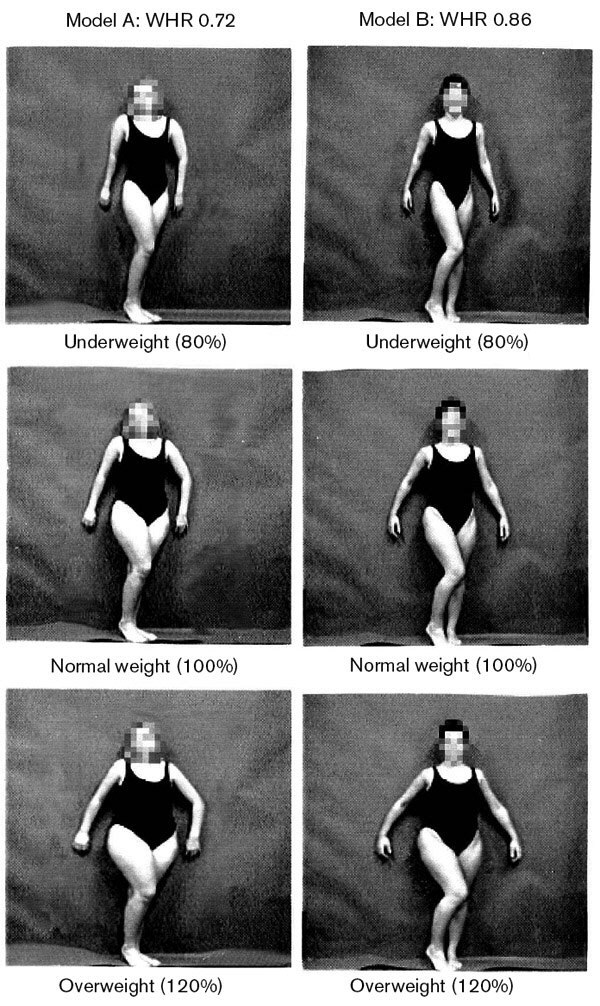Strange study by Rebecca Puhl and Fred Boland:(1, pdf)
Introductory psychology students (120 females and 120 males) rated attractiveness and fecundity of one of six computer-altered female figures representing three body-weight categories (underweight, normal weight and overweight) and two levels of waist-to-hip ratio (WHR), one in the ideal range (0.72) and one in the non-ideal range (0.86). Both females and males judged underweight figures to be more attractive than normal or overweight figures, regardless of WHR. The female figure with the high WHR (0.86) was judged to be more attractive than the figure with the low WHR (0.72) across all body-weight conditions. Analyses of fecundity ratings revealed an interaction between weight and WHR such that the models did not differ in the normal weight category, but did differ in the underweight (model with WHR of 0.72 was less fecund) and overweight (model with WHR of 0.86 was more fecund) categories. These findings lend stronger support to sociocultural rather than evolutionary hypotheses.
Puhl is a fool, and Boland needs an education by Mr. Holland.
Look at what was classified as normal weight and underweight in the study.
Figure 1. Computer-generated images of Model A (WHR = 0.72) and Model B (WHR = 0.86) depicted in underweight, normal weight and overweight conditions.
The pictures say it; the authors were out of their minds; to conduct the study they were unfit.
And haste makes waste. One would expect the authors to carefully models select. Shoulders like boulders, notwithstanding a lower WHR, do attractiveness mar.
Those with a clue who would Puhl and Boland’s report review would thus retort. There is no 0.7 ideal WHR; Tassinary and Hansen’s (1998) paper has been refuted thus far; and Playboy centerfolds’ weights are underreported by far. And please, the “underweight models” shown in the study are overweight by high-fashion model standards, whose waifishness reflects the selfishness of gay fashion designers, not the demand of the consumers.
References
- Puhl, R. M., and Boland, F. J., Predicting female physical attractiveness: Waist-to-hip ratio and thinness, Psychol Evol Gender, 3, 27 (2001).

Comments
Lower WHR IS more attractive, when it is achieved on account of smaller waist and not on account of bigger hips and thighs. That was unfair and misleading comparison, figure A had much bigger hips and thighs and shoulders.